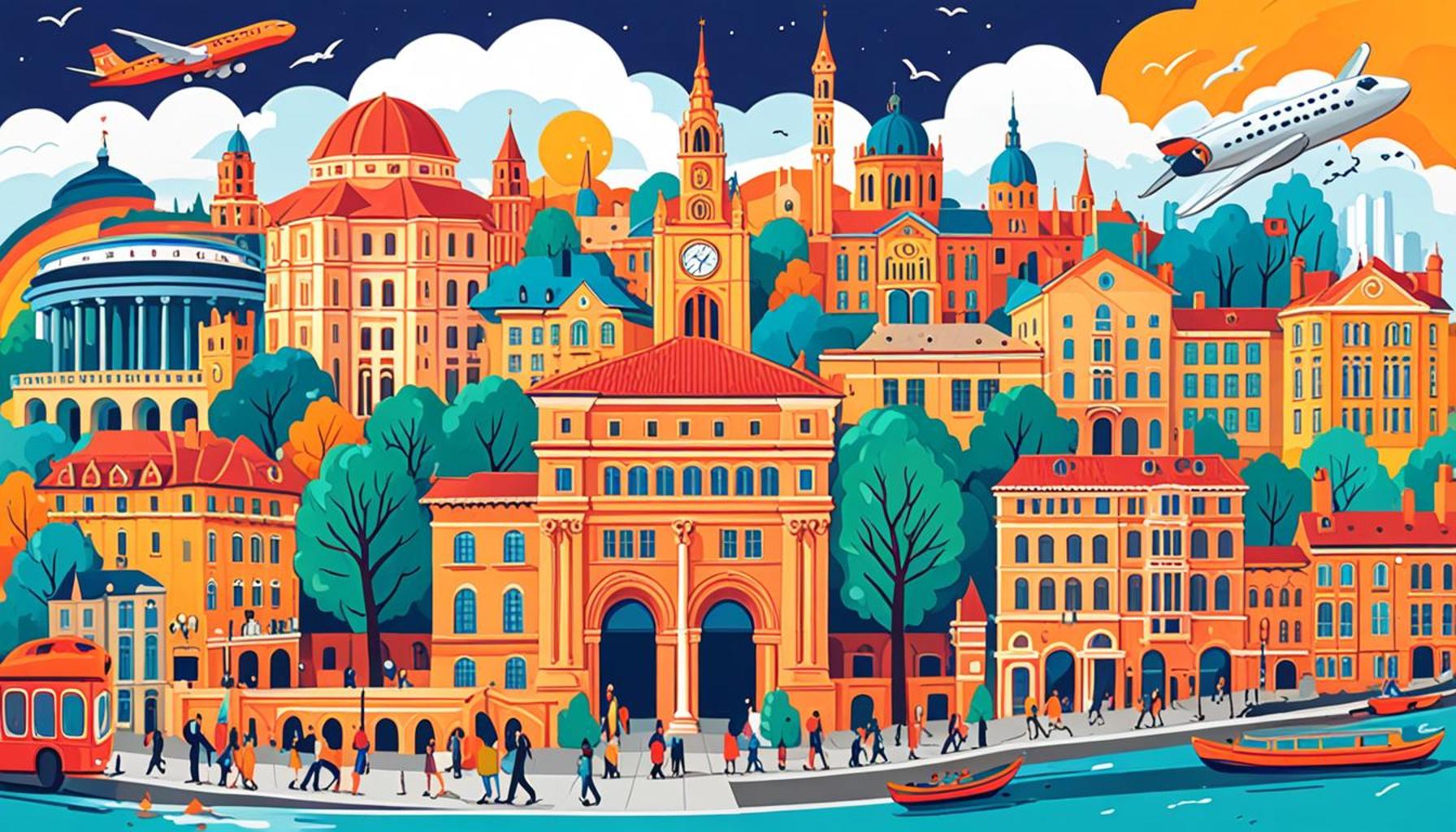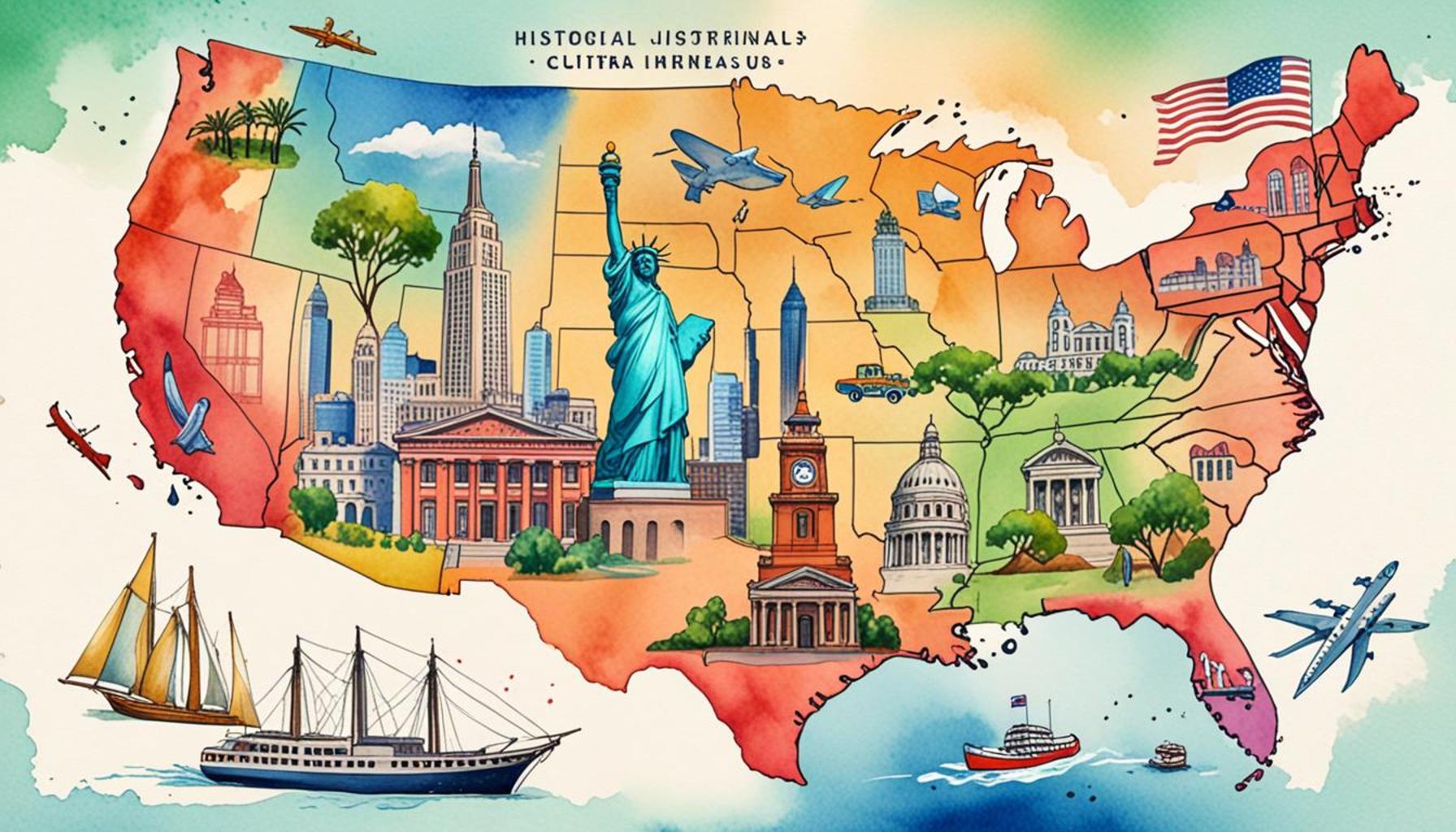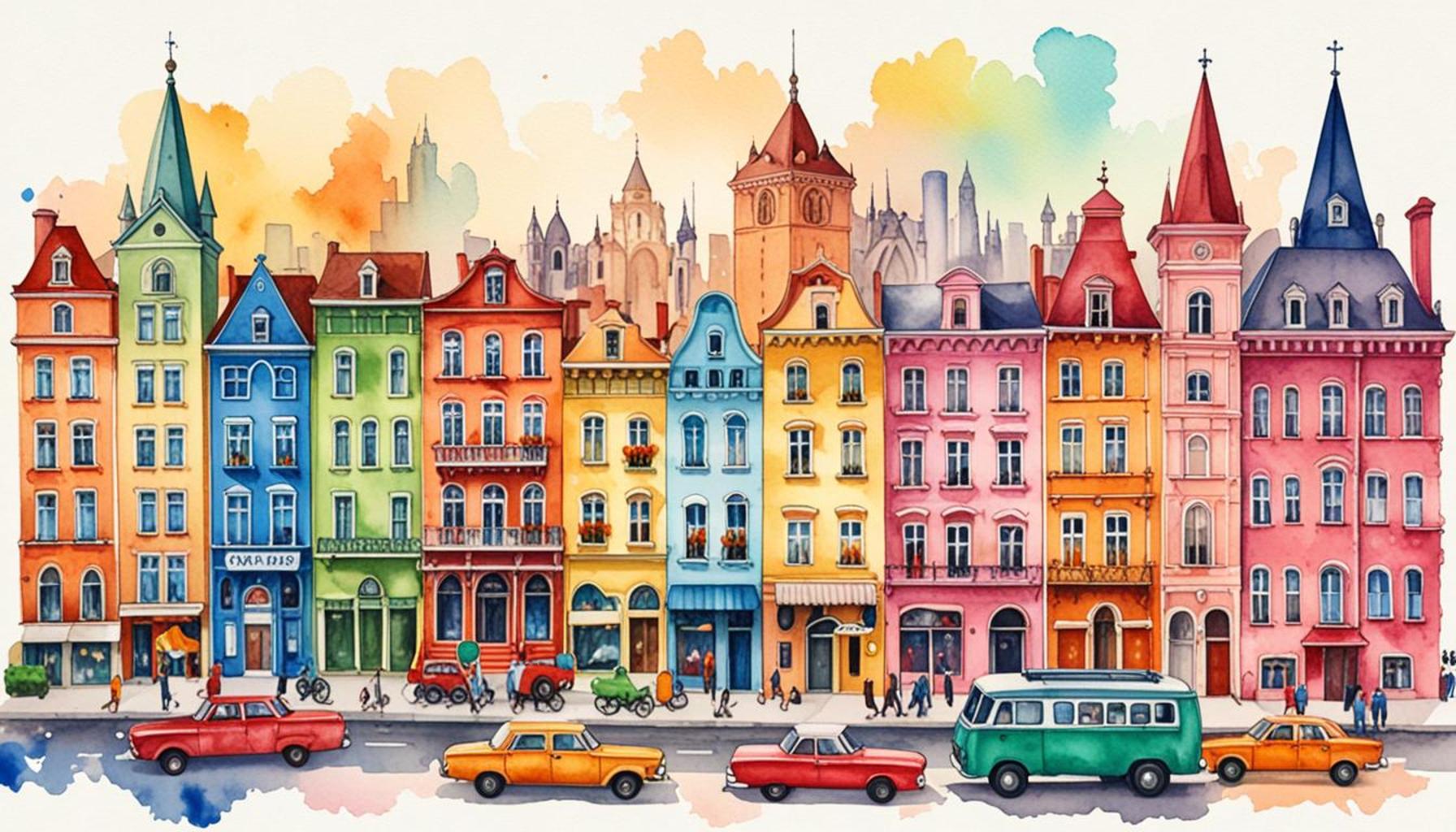Exploring University Cities: Economic Destinations with Culture and History

The Essence of University Cities
University cities function as melting pots of innovation, creativity, and intercultural interaction. Nestled alongside renowned academic institutions, these cities embody a rich tapestry of cultural experiences, historical significance, and robust economic growth. Whether you’re a student exploring course offerings or a visitor indulging in a weekend of discovery, these urban landscapes reveal endless opportunities through their distinct offerings.
Cultural Experiences
In university cities, culture thrives through an abundance of museums, art galleries, theaters, and live music venues. For instance, the Museum of Fine Arts in Boston showcases an impressive collection spanning 5,000 years, ensuring art aficionados find something that resonates with their tastes. Similarly, the Berkeley Art Museum and Pacific Film Archive serves as a platform for contemporary art while also emphasizing experimental film. These cultural institutions not only provide educational experiences but also engage the community, enabling local artists and performers to showcase their talent. Festivals, such as the Cambridge Science Festival in Massachusetts, unites local residents and visitors, celebrating the intersection of education and entertainment.
Historical Landmarks
Historically rich, universities often coincide with great architectural achievements and legacies. For example, Harvard University, one of the oldest institutions in the United States, embodies historical elegance with its iconic brick buildings and renowned libraries, like the Widener Library. Meanwhile, in Berkeley, the UC Berkeley campus features a stunning bell tower and landscapes that echo the city’s historic role in social movements, particularly during the Free Speech Movement of the 1960s. By wandering through these campuses and their surrounding areas, one can step back in time and discover how these educational institutions have shaped societal progress.
Economic Growth
Beyond the classrooms, university cities are often engines of economic activity. The synergy between academia and industry leads to thriving startup ecosystems in cities like Austin, Texas. With its proximity to universities, Austin fosters innovative tech firms and entrepreneurial ventures, contributing to its reputation as a major hub for the tech industry. Additionally, research initiatives spilling out of universities frequently translate into commercial products, proving that the relationship between academia and industry can lead to substantial economic benefits.
Overall, university cities like Boston and Berkeley are not just institutions of learning; they are vibrant environments that foster growth, engagement, and discovery. Each city tells a compelling story filled with untapped experiences and insights, making them worth every moment spent exploring their charms. As these cities continue to evolve, they remain essential to understanding the connection between education, culture, and economic prosperity in a rapidly advancing society.

DISCOVER MORE: Click here to learn about cultural experiences in sacred places
Cultural and Economic Vibrancy
As we delve deeper into the unique attributes of university cities, it becomes evident that these locales are not merely educational hubs, but also serve as vibrant cultural and economic landscapes. From art festivals to entrepreneurial spurs, the confluence of academia and city life brings about a dynamism that is hard to overlook. The cultural capital and economic prowess of these areas often lay the groundwork for a robust, multifaceted experience for residents and visitors alike.
Cultural Melange
The essence of cultural expression in university cities is palpable in their myriad offerings. Renowned festivals, art exhibitions, and interactive performances create a rich environment that draws in diverse demographics. Consider the South by Southwest (SXSW) festival in Austin, Texas, an iconic event that celebrates music, film, and innovation, fostering connections among students, artists, and industry leaders. Likewise, the Philadelphia Fringe Festival showcases the city’s dedication to performing arts, featuring experimental works from local and international creators.
In addition to festivals, the arts naturally intermingle with educational initiatives. Universities frequently host guest lectures, workshops, and cultural events, facilitating direct engagement between students and community members. Over time, this collaborative environment cultivates a deep sense of belonging and interaction, enriching the cultural fabric of the city.
Historical Significance and Architectural Grandeur
University cities are often steeped in history, with architectural marvels that stand as testaments to their past. For instance, the University of Virginia, designed by Thomas Jefferson, features a UNESCO World Heritage Site that demonstrates how education is interwoven with American culture and history. Similarly, the historic district of New Orleans boasts Tulane University, blending old-world charm with modern academic pursuits. These landmarks represent more than just physical structures; they give insight into the legacy of education and the historical narratives they encompass.
Exploring these sites not only provides a glimpse into their academic histories but also offers opportunities to engage with locals, who can share countless anecdotes and insights, further illuminating the significance of these structures.
Economic Impact and Innovation
On a broader scale, university cities play a pivotal role in local and regional economies. The collaboration between educational institutions and businesses leads to an environment ripe for innovation. For instance, cities like Boston are recognized as hotbeds for technology and healthcare startups, with universities acting as incubators for research and development. This relationship fosters a climate where students and faculty alike can transform ideas into robust business opportunities.
- Incubation Centers: Many universities have established technology parks that support aspiring entrepreneurs by providing resources and mentorship.
- Talent Pool: The influx of students creates a highly skilled workforce, essential for attracting businesses.
- Research Grants: Universities often secure funding that directly supports local economies through various research initiatives.
In understanding the multifaceted nature of university cities, we see how these urban environments not only nurture educational pursuits but also serve as bustling economic hubs ripe with cultural richness and historical depth. The continued evolution of these cities offers an intriguing journey for anyone eager to uncover the many layers of their significance.
| Advantages | Details |
|---|---|
| Cultural Richness | University cities often house museums, theaters, and cultural festivals, providing a vibrant cultural experience for residents and visitors alike. |
| Economic Opportunities | With a focus on education and innovation, these cities attract businesses, offering a range of employment opportunities for graduates and the local populace. |
Exploring university cities unveils their dual nature as hubs of education and vibrant economic landscapes. Take for example the profound impact these institutions have on local culture. They serve as epicenters of artistic expression, where world-class exhibitions and live performances flourish. Additionally, the dynamic atmosphere encourages startups and established companies to flourish, creating a symbiotic relationship that propels employment rates upward.Moreover, the presence of diverse populations enriches the social fabric of these cities. International students bring new perspectives, deepening the cultural interactions that shape local traditions. Furthermore, university-led research initiatives often lead to innovations that benefit various sectors, from technology to sustainable practices.In summary, university cities present tantalizing prospects for both economic growth and cultural engagement, encouraging exploration into their unique histories and contributions to the broader community.
DISCOVER MORE: Click here for the ultimate guide
Community Integration and Global Perspectives
As vibrant centers of learning and innovation, university cities foster community integration with their surrounding environments. This synergistic relationship enhances cultural exchange and creates a melting pot of ideas, traditions, and experiences. The presence of universities often encourages outreach programs, volunteer initiatives, and local partnerships that yield benefits for both students and residents.
Civic Engagement and Service Learning
Many universities prioritize civic engagement, emphasizing the importance of service learning and community involvement. Initiatives such as community-based research not only enrich students’ educational experience but also provide vital services to local populations. For instance, the University of California, San Diego collaborates with local organizations to tackle pressing social issues, allowing students to apply their skills in real-world contexts.
These partnerships create a two-way street of learning. As students contribute their knowledge and time, they absorb invaluable lessons from the communities they serve, creating strong bonds that transcend the typical student-resident divide. The resulting interactions contribute to a sense of belonging and mutual support, enriching the city’s cultural landscape.
Global Education and Diverse Experiences
With international students making up a significant portion of the population in university cities, these locales act as microcosms of global culture. Institutions like New York University attract students from all corners of the globe, fostering an environment where diverse perspectives thrive. This international presence enhances the culinary scene, festivals, and daily life, as different cultures interweave within the community fabric.
Additionally, universities often encourage study abroad programs and exchanges that further expand local and global connections. This global mindset attracts businesses that value diverse viewpoints, which can lead to opportunities in international trade, cultural diplomacy, and innovation. A prime example is the thriving startup ecosystem in San Francisco, which draws from the diverse student body of Stanford University and other regional institutions, propelling advancements across various sectors.
Urban Development and Sustainability
Another critical aspect to consider is how universities influence urban development and sustainability efforts. The integration of campuses into the urban landscape often leads to urban renewal projects, transforming neglected areas into thriving spaces for business and culture. An illustrative case is seen in the University of Washington, whose expansion efforts revitalized the surrounding neighborhoods, infusing them with restaurants, parks, and cultural venues.
- Green Initiatives: Many universities are at the forefront of sustainability, implementing programs that promote eco-friendly practices and urban gardening, encouraging the local community to adopt similar values.
- Transit-Oriented Development: In cities with established university networks, public transportation links are often enhanced, making it easier for both students and residents to navigate urban spaces while reducing carbon footprints.
- Collaborative Projects: Joint ventures between universities and local governments aim to improve community resources, such as libraries and recreational facilities, benefitting all residents.
This dynamic interplay between education, community engagement, and urban development illustrates how university cities continuously evolve. They are not merely places of learning but are integral to shaping the economic and cultural contours of their surroundings. The impact of these institutions extends well beyond their campus boundaries, creating vibrant landscapes rich with history, innovation, and cultural depth.
DISCOVER MORE: Click here for budget-friendly family travel itineraries
Conclusion: The Multifaceted Impact of University Cities
In summary, university cities represent far more than mere educational hubs; they are robust economic destinations rich in culture and history. The synergistic relationship between universities and their surrounding communities fosters cultural exchange, civic engagement, and global perspectives that benefit both students and residents alike. Through initiatives like community-based research and outreach programs, universities not only enrich the student experience but also address pressing local issues, bridging the gap between academia and community welfare.
The diverse tapestry of residents, including a significant population of international students, enhances the local cultural fabric, creating vibrant culinary scenes, festivals, and artistic endeavors. At the same time, local partnerships and collaborative projects drive innovation and economic growth, establishing university cities as thriving microcosms of global enterprise.
Moreover, the focus on urban development and sustainability initiatives further underscores the transformative role universities play in shaping their environments. By revitalizing neighborhoods, enhancing public transport, and promoting eco-friendly practices, these institutions contribute to a more sustainable future while cultivating a sense of community ownership and pride.
As we explore the myriad ways that university cities influence their regions, it becomes clear that these cities are not static, but rather dynamic ecosystems constantly evolving to meet the challenges and opportunities of a globalized world. For those seeking a deeper understanding of economic, cultural, and historical interconnections, university cities present a unique and compelling narrative worth exploring.



